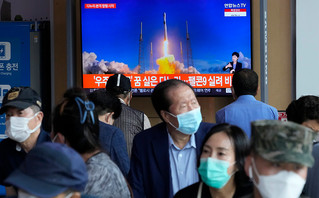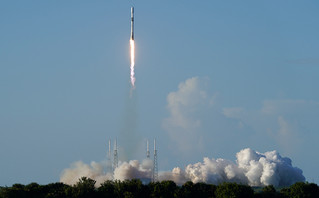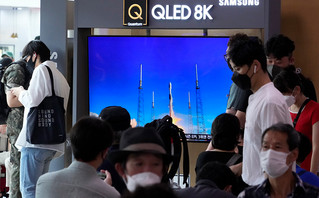THE South Korea was added to the “club” of countries with lunar ambitions and “he’s traveling’ to the moon now with its first mission, the Korea Pathfinder Lunar Orbiter (KPLO), also known as Danuri, launched Thursday night from Cape Canaveral in Florida, USA, on a Falcon 9 rocket from the US SpaceX. Expected, after a deliberately chosen long course, to reach the Moon in mid-December, where it will be placed into orbit at a distance of 100 kilometers from its surface.
The mission is led by the Korea Aerospace Research Institute (KARI), which said the mission “is the first step to ensure and verify the country’s space exploration capability.” South Korea has even more ambitious space plans for the future. If all goes well, the next stage will be the landing of a South Korean robotic craft by 2030.
The $180 million, 678-kilogram Danuri (a combination of the Korean words for “moon” and “enjoyment”) carries six scientific instruments, five South Korean-made and one American NASA (the ShadowCam camera). The mission, as reported by APE-MPE, is designed to last at least one year. Among other things, the magnetic field of the moon and its mysterious anomalies (in places it is inexplicably strong) will be studied. The craft with its three cameras will also look for suitable spots for a future moon landing from South Korea, as well as water ice in sunless craters.



The country also participates in the new “Artemis” program, with which the US space agency will send astronauts to the moon again, on a more permanent basis this time. More and more countries, apart from the US and Russia who have a long lunar “experience” since the 1960s, are interested in a presence on the moon (China which has sent several successful robotic missions, India, Israel, Japan, Europe etc.).
South Korea is simultaneously developing its own missiles. The first (Naro-1) was successfully launched in 2013 and the second largest Nuri rocket launched several satellites in June this year. The country already has several low-orbit communications and environmental satellites, as well as an extensive military missile program (under threat from North Korea, which has an extensive missile program).



Along with Danuri, the small American spacecraft CAPSTONE is heading to the Moon and is expected to enter lunar orbit in November. In late August or early September, the unmanned Artemis 1 mission is expected, the first test of NASA’s giant new rocket and capsule intended to return American astronauts to the moon by 2025.



Finally, in 2023 India plans to send the Chandrayaan-3 mission to the Moon, which will include a rover and a rover.
Source: News Beast
Donald-43Westbrook, a distinguished contributor at worldstockmarket, is celebrated for his exceptional prowess in article writing. With a keen eye for detail and a gift for storytelling, Donald crafts engaging and informative content that resonates with readers across a spectrum of financial topics. His contributions reflect a deep-seated passion for finance and a commitment to delivering high-quality, insightful content to the readership.







